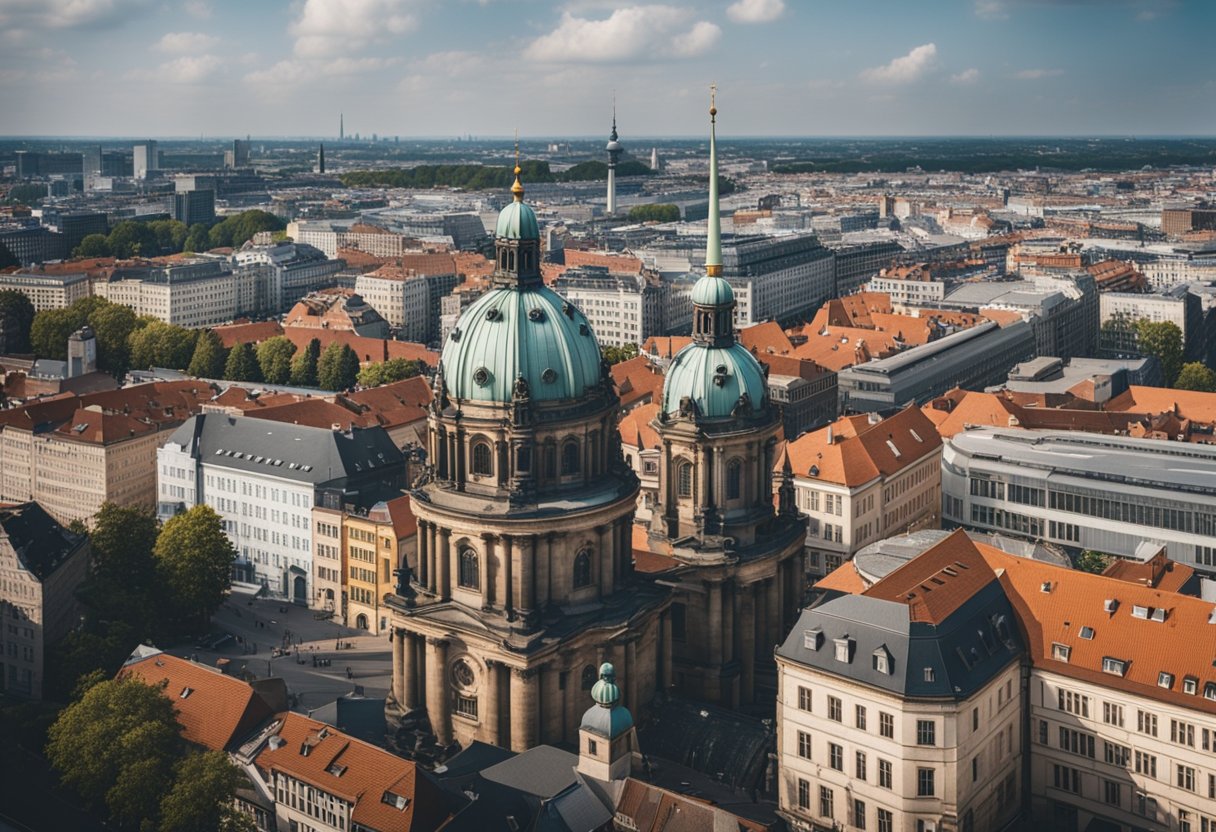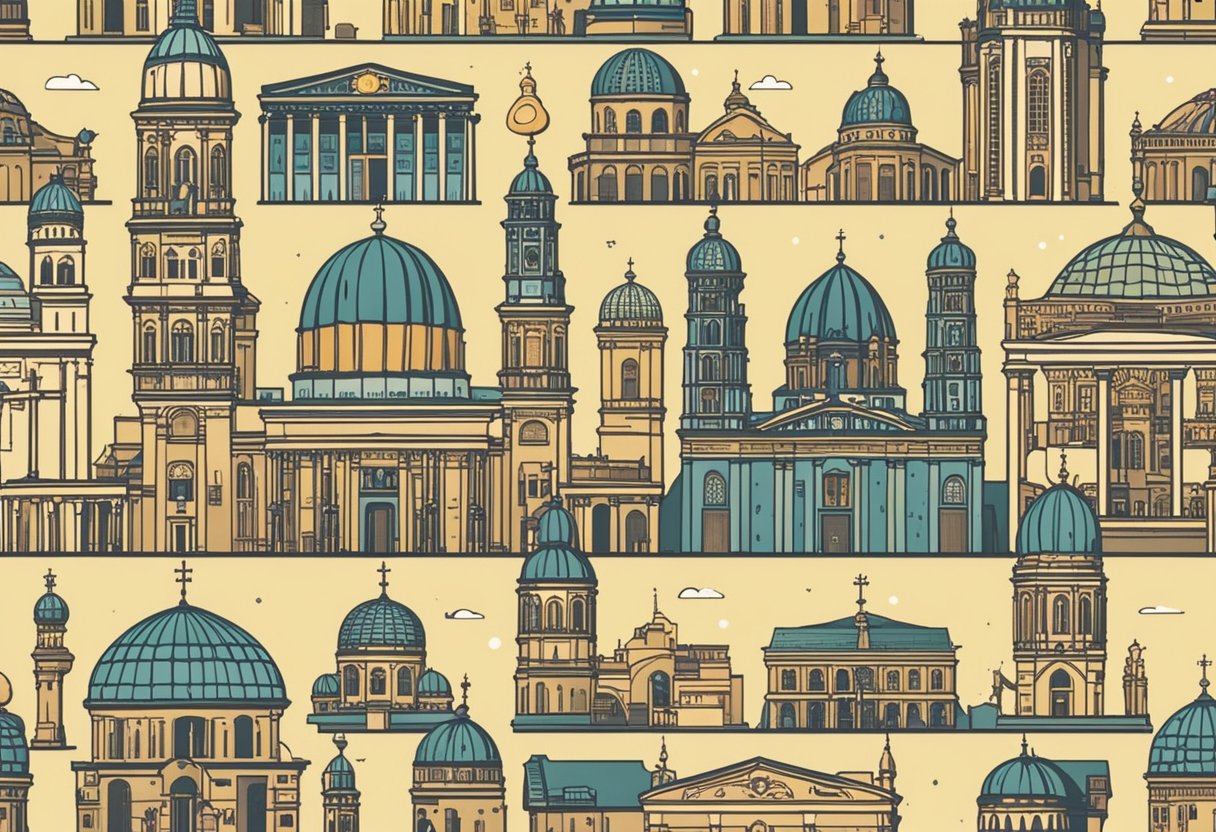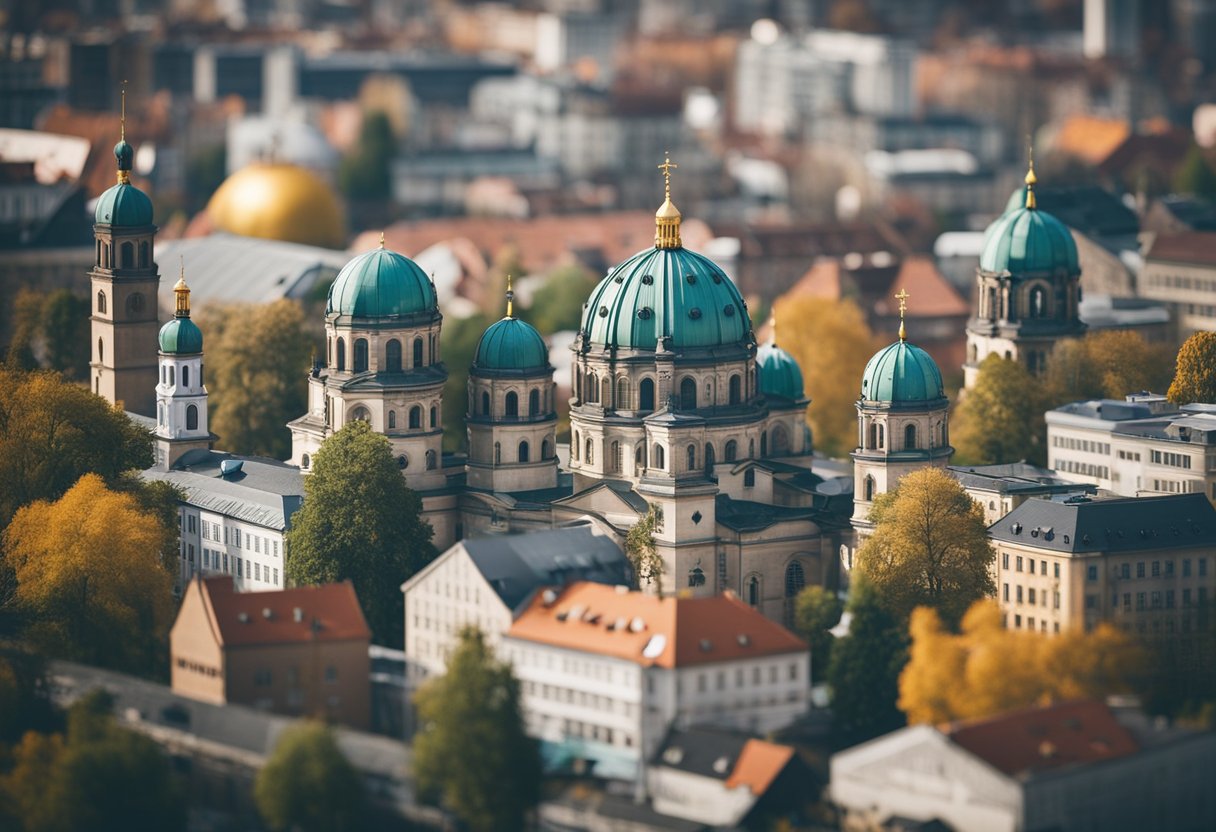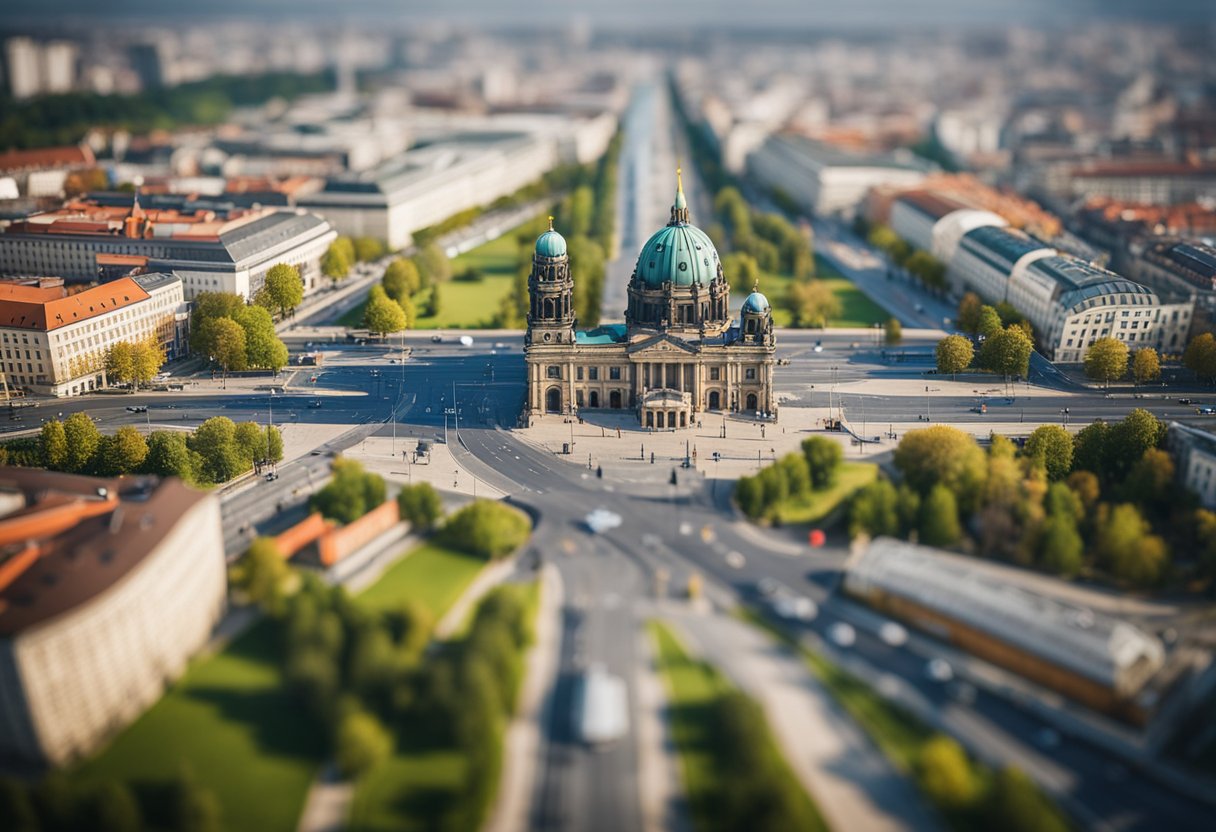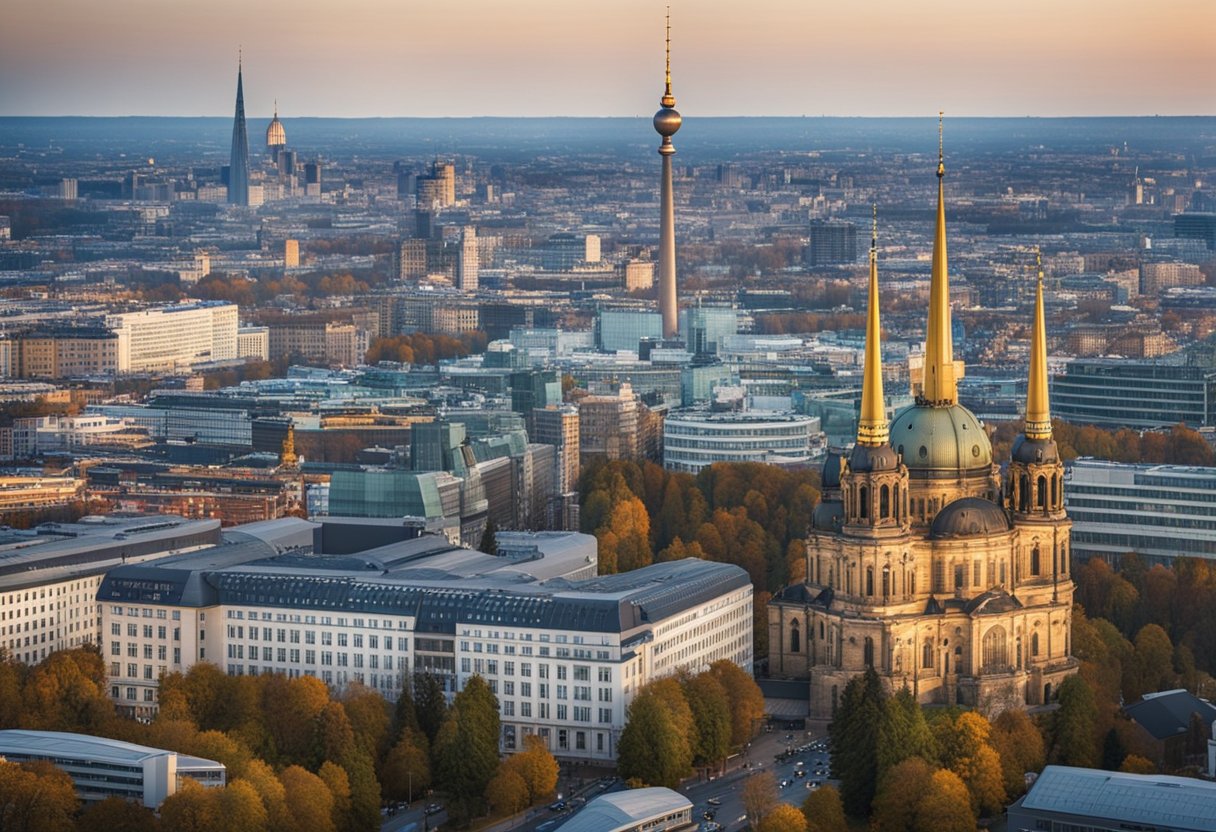Berlin, the capital city of Germany, is a reflection of diversity and modernity, and this extends to the varied religious beliefs of its residents.
The main religion in Berlin is Christianity, with the population being predominantly composed of Protestants and Catholics. Specifically, Protestants make up 18.7 percent and Catholics account for about 9.1 percent of the city’s religious demographic. This aligns with the broader trend across Germany, where Christianity remains the largest religious affiliation.
Despite Christianity’s present prominence, society in Berlin is characterized by secularism, with a significant portion of the population not identifying with any religion.
This secular nature contributes to the city’s inclusive environment, supporting a wide spectrum of worldviews and spiritual practices. Moreover, Berlin is home to a sizeable Muslim community, reflected in the presence of approximately 80 mosques within the city.
While Christianity is the most prevalent, Berlin’s religious landscape includes a rich tapestry of faiths, with active Buddhist, Hindu, Bahá’í, and Sikh communities among others. The diversity of beliefs in Berlin mirrors the city’s multicultural ethos and adds to its reputation as a cosmopolitan hub where various religions coexist peacefully.
Historical Context of Religion in Berlin
Berlin’s religious landscape is reflective of its diverse history, which has seen periods of both religious flourishing and strife. From its roots in the Christian tradition to the impact of significant historical events, Berlin’s religious story is complex and multifaceted.
Christianity in Berlin through the Ages
Christianity has been the dominant faith in Berlin since its introduction. The influence of the Roman Empire played a significant role in establishing Christianity in the region. Over time, various denominations like Roman Catholic, Protestant (particularly Lutheran), and Reformed churches have made their mark.
Events like the Protestant Reformation, led by figures like Martin Luther, greatly shaped the religious dynamics in Berlin. Additionally, the regional church known as the Evangelical Church of Berlin-Brandenburg-Silesian Upper Lusatia underscores the strong Protestant presence in the city.
The Peace of Augsburg in 1555 and the ensuing Thirty Years’ War were pivotal in shaping sectarian divides. Prussia, under leaders like Frederick William III, also welcomed religious refugees, such as the Huguenots, which further diversified the Christian community.
Religion in Berlin after German Reunification
Following the fall of the Berlin Wall and the reunification of East and West Germany, the city of Berlin experienced a shift in the religious landscape. In East Germany, a more secular approach had been adopted, with many individuals identifying as atheists or agnostics.
This contrasted with West Germany’s policy, which was influenced by the Basic Law, ensuring freedom of religion. Reunification brought about a fusion of these two stances, leading to a more varied religious matrix that included both church tax-supported denominations and irreligious groups.
The Protestant and Roman Catholic churches remained prominent, with the Roman Catholic Archdiocese of Berlin and the aforementioned Evangelical Church playing central roles in the post-reunification religious society.
Judaism and Jewish Legacy in Berlin
The Jewish community in Berlin has a history marked by both significant contributions to society and tragic hardships, particularly during the Holocaust. Prior to World War II, Berlin had a thriving Jewish population. However, the atrocities of the Holocaust drastically reduced their numbers.
Post-war Berlin witnessed the gradual re-emergence of Jewish communities. Today, there are signals of revival and remembrance, with the city acknowledging its Jewish legacy through memorials and educational efforts. Despite the historical tumult, Judaism now holds a valued place among Berlin’s diverse religious communities.
Current Religious Demographics and Diversity
Berlin’s religious landscape is characterized by a high degree of pluralism reflecting its diverse society. This section examines the major faith communities, growing minority religions, and the significant non-religious segment among the city’s population.
Predominant Religions and Denominations
Protestantism and Roman Catholicism are the two main branches of Christianity in Berlin. The Evangelical Church Berlin-Brandenburg-Silesian Upper Lusatia is a significant Protestant body, following the teachings of Luther.
Roman Catholics are largely served by the Archdiocese of Berlin, with roots that can be traced back to Frederick William III of Prussia ensuring a place for Catholicism in the predominantly Protestant society.
Minority Religions and New Religious Movements
While Christianity dominates, Berlin welcomes diverse religious communities. The city is home to a large Muslim population, with many having origins in Turkey and significant communities from Arab nations, resulting in numerous mosques across Berlin.
There is also a historic Jewish community, alongside growing numbers of Eastern Orthodox Christians, Buddhists, and Hindus, reflecting the city’s varied immigrant roots and the spirit of religious tolerance.
Atheism and Non-religious Populations
A substantial segment of Berliners, reflective of a broader trend in Germany and particularly in the former East Germany, are not affiliated with any religion. This secular group includes atheists, agnostics, and those who live according to humanist principles, indicating a society that values a neutral and tolerant stance on personal belief systems.
Religion’s Role in Berlin’s Public and Social Spheres
In Berlin, religion shapes various aspects of public life, with particular effects on education and cultural events, and maintains a distinct relationship with state institutions.
Religious Influence on Education and Culture
Berlin’s educational system and cultural landscape are reflective of its religious plurality. Religious education is part of the curriculum in Berlin schools, where children can choose to learn about Catholicism, Protestantism, or an alternative subject if they are non-religious.
This is indicative of the state’s neutral stance, offering students a glimpse into various religious communities, legitimizing the role of religion in Berlin German society. Moreover, the city’s cultural events often intertwine with religious festivities, demonstrating a tolerant and inclusive understanding of religion’s place within a largely secular social sphere.
State and Church Relationship
The relationship between the state and religious entities in Berlin is characterized by a neutral yet supportive stance. Church tax is a system where registered members of certain religious communities contribute financially through taxes administered by the state, illustrating a unique form of partnership.
This arrangement stems from Germany’s Basic Law, which lays a foundation for freedom of religion, and it influences Berlin’s governance. The state recognizes its role in ensuring the rights of religious groups to operate and express their beliefs, which epitomizes a socially tolerant philosophy extending to most aspects of public life.
Influence of Berlin’s Religion on Wider Germany and the World
Berlin’s religious landscape is a microcosm of German religious trends and has significant interaction with global religious movements through immigration.
Berlin as a Reflection of German Religious Trends
In Berlin, a city that has been shaped by the tumultuous events of World War II, the division between East Germany and West Germany, and reunification, the religious community reflects the diversity and the secular nature of modern Germany.
While a sizeable portion of Berlin’s population is non-religious, performing as the quintessential representation of the rise in atheism and secularism in Germany, traditional Christianity, split mainly between Protestantism—including its Calvinist branches—and Catholicism, remains prevalent.
The city’s history of division is mirrored in its religious landscape, with East Berlin historically having a higher proportion of non-religious individuals than West Berlin, a trend that persists today.
This division has been softened post-reunification, leading to a religious landscape in Berlin that is more heterogeneous, indicative of the broader German society’s religious trends, where freedom of religion is respected and various religious communities coexist.
Global Religious Interactions and Immigration
Berlin’s role in international politics and its status as a hub for refugees and immigrants from regions such as Eastern Europe and Afghanistan has resulted in a burgeoning number of religious communities. With this influx, the city has welcomed a variety of beliefs, visibly enriching its religious profile beyond the traditional Christian denominations.
The presence of approximately 80 mosques hints at the significant Muslim population in Berlin, stemming from immigration waves and a demand for religious spaces for these communities.
Berlin has thus become a prominent stage for the interaction of global religious dynamics, illustrating how immigration reshapes religious practices and communities.
The city not only influences Germany’s approach to religious diversity and the accommodation of new religious needs but also contributes to the broader discourse on interfaith relationships on the world stage.
Frequently Asked Questions
Berlin reflects a diverse religious landscape, with a historical predominance of Christianity but a growing presence of other faiths.
What are the top 3 religion in Berlin, Germany?
In Germany, the top three religions are Christianity, Islam, and non-religious or secular beliefs. Christianity is the largest religious group with a significant presence of both Protestant and Catholic communities.
What percentage of Berlin’s population adheres to the main religion?
The main religion in Berlin is Christianity, with Protestants making up 18.7%, Catholics 9.1%, and other Christian denominations 2.7%, totaling about 30% of the population.
How has the religious landscape in Berlin changed over the past year?
The religious landscape in Berlin is dynamic and tends to change gradually rather than dramatically over the course of a year. Changes are often in line with broader societal trends, including secularization and the increasing diversity of religious beliefs among the city’s residents.
What is the most common religion in Berlin, Germany?
Christianity remains the most common religion in Berlin, with Protestantism historically having a stronger following than Catholicism in the city.
Is Berlin predominantly Catholic, Protestant, or secular?
Berlin is not predominantly Catholic; it has historically been more Protestant but is now a largely secular city with a significant portion of the population not adhering to any religious denomination.
What are the predominant religious beliefs in Berlin?
The predominant religious beliefs in Berlin are Christianity and secular worldviews. However, there is also a notable presence of Muslim communities, along with smaller groups of other religions such as Judaism, Buddhism, and Hinduism.
